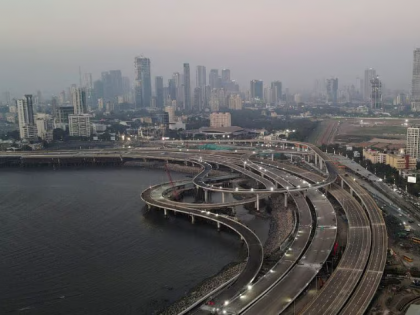Mumbai Traffic: How Will Commuters Be Affected If BMC Demolishes Goregaon’s Veer Savarkar Flyover?
By Lokmat Times Desk | Updated: August 5, 2025 16:08 IST2025-08-05T16:06:14+5:302025-08-05T16:08:15+5:30
The BMC is planning to demolish the Veer Savarkar flyover at Goregaon West because it is falling in line ...

Mumbai Traffic: How Will Commuters Be Affected If BMC Demolishes Goregaon’s Veer Savarkar Flyover?
The BMC is planning to demolish the Veer Savarkar flyover at Goregaon West because it is falling in line with the second phase of the Mumbai Coastal Road project, which would link Versova in the western suburbs with Dahisar in northern Mumbai. If the BMC proceeds with plans to dismantle the Veer Savarkar flyover in Goregaon West, daily commutes across Mumbai's western suburbs may face significant disruption. The structure, commonly known as the MTNL flyover, was built in 2018 at a cost of ₹27 crore and has since become a crucial link between the Western Express Highway (WEH) and key areas like Goregaon and Malad. The flyover cuts down travel time to less than 10 minutes from an earlier 45-minute ordeal. However, its alignment clashes with the second phase of the Mumbai Coastal Road project, prompting civic officials to propose its demolition in favor of integrating east-west connectivity with the Goregaon Mulund Link Road (GMLR).
Currently, the MTNL flyover acts as a lifeline for thousands of motorists, offering a direct route from the Radisson Hotel junction on WEH to Rustomjee Ozone. If removed without adequate traffic management or a ready alternative, the impact on vehicular movement across the western corridor could be severe, causing bottlenecks, congestion, and longer travel times. To mitigate this, BMC has proposed a double-decker flyover connecting Mindspace and Dindoshi, replacing the existing flyover's utility. The design blueprint has already been finalized and awaits administrative approval. Until the alternative is built, commuters could face severe delays, especially during peak hours.
Also Read: Indian Army Refutes Reports of Soldier Injuring Civilians in Nagpur Incident
The demolition plan stems from the evolving design of Phase 2 of the Mumbai Coastal Road, which aims to boost north-south connectivity while also enabling smoother east-west access by connecting to the upcoming GMLR. Initially, these projects were planned independently, but the revised alignment has necessitated major structural changes, including the removal of the flyover. The second phase is split into six parts: Packages A to F, covering a stretch of 25 km from Versova to Dahisar, with extensions up to Bhayander. The new infrastructure will feature cable-stayed bridges, underground tunnels, and interchanges designed to modernize urban transit.
BMC has already received environmental approvals, and on-ground construction has begun. Once completed, the ₹20,000 crore project promises to transform Mumbai’s coastal and arterial traffic flows. However, in the interim, road users in Goregaon, Malad, and nearby areas will likely bear the brunt of traffic slowdowns. Without a well-implemented transition strategy or a temporary traffic diversion plan, the flyover's removal could pose daily challenges for thousands of commuters relying on this fast-track connection.
Open in app